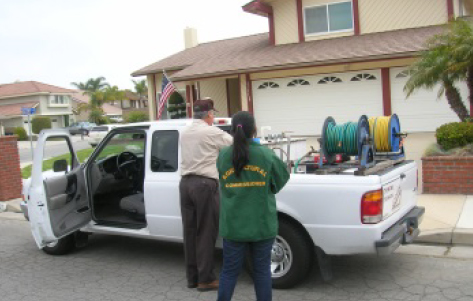
Born and raised in Whittier, Calif., he attended Humboldt State University, CSU Fullerton, Fullerton College, Santiago College, Santa Ana College, Pepperdine University and New Jersey State University and holds degrees in biology, math and natural science.
He began his career in 1989 with the California Department of Food and Agriculture (CDFA) as a Pest Detection Program trapper. Later that year, he joined the Orange County Department of Agriculture as a full-time trapper. In 1991, he returned to CDFA as an Inspector II and worked in the Mediterranean fruit fly sterile release program supervising crews releasing flies from trucks. He joined the Orange County Department of Agriculture as a weights and measures inspector in 1991. He served as an Agricultural/Weights-and-Measures Inspector I, II, III, and a Program Supervisor and Administrative Manager I (Deputy Commissioner/Sealer). He was appointed as the Orange County Agricultural Commissioner/Sealer of Weights and Measures on April 12, 2016.
To this day, he still remembers fruit flies getting in his ears and mouth: “No, they do not taste like chicken.”
Orange County’s pesticide usage is primarily urban. The department registers about 2,000 companies—from structural pest control companies and crop dusters, to maintenance gardeners—each year to perform pest control work. Farmwise, the county’s principal crops are avocados, citrus, strawberries, and nurseries.
Huanglongbing (HLB), a major citrus disease, was recently found in the county. Croy’s office is working with CDFA to monitor and treat for Asian citrus psyllids, which carry the disease.
“Our greatest challenge is working with CDFA to convince the homeowners, who are adverse to pesticide use, to allow the mandatory treatments”
Croy says he places a high priority on communication with industry and residents. He is active with the Orange County Pest Control Operators of California and Orange County Farm Bureau, and has conducted many HLB informational meetings for northern Orange County’s cities.
Croy says he is also embracing technology. All of his office’s inspectors and supervisors now have iPhones and iPads, and some have laptop computers. The office adopted CalPEATS (the California Pesticide Enforcement Activities Tracking System) and, in 2016, began work on new software to integrate with Orange County’s Public Works Department’s billing system.
In 2016, he was also instrumental in restructuring, increasing the number of field inspector positions and productivity and reallocating two supervisor positions – one for agricultural pesticide use and one to oversee structural pesticide use.


